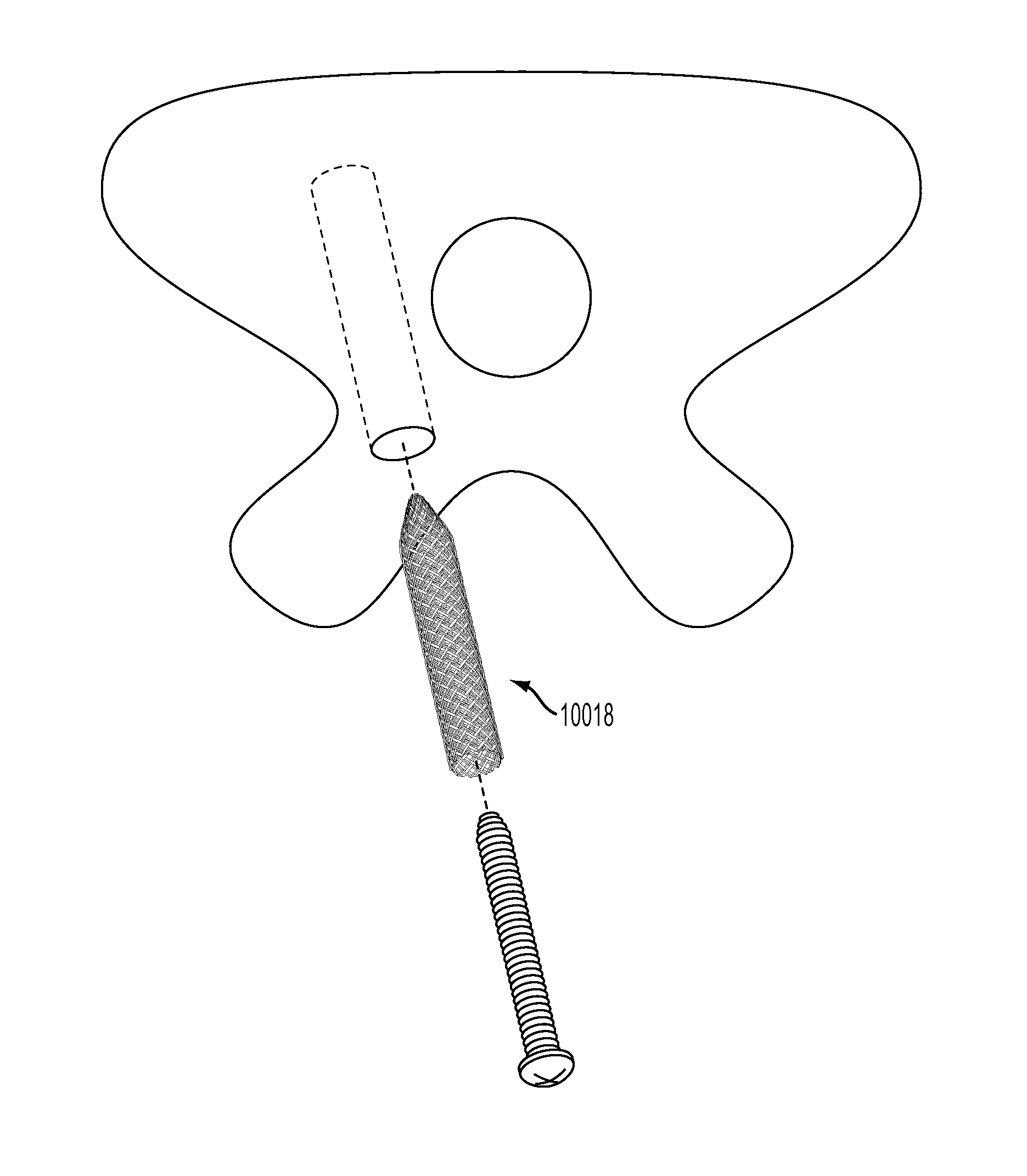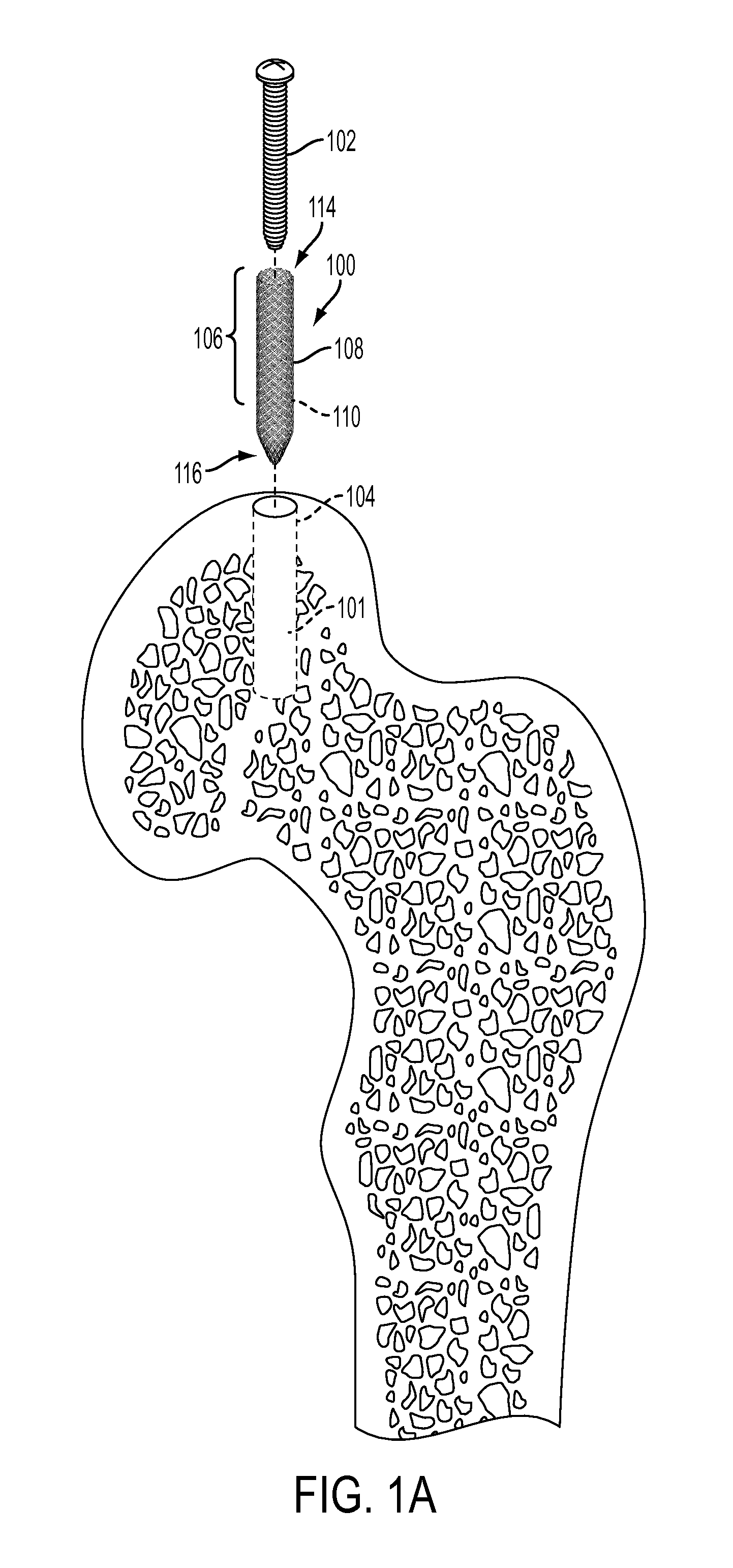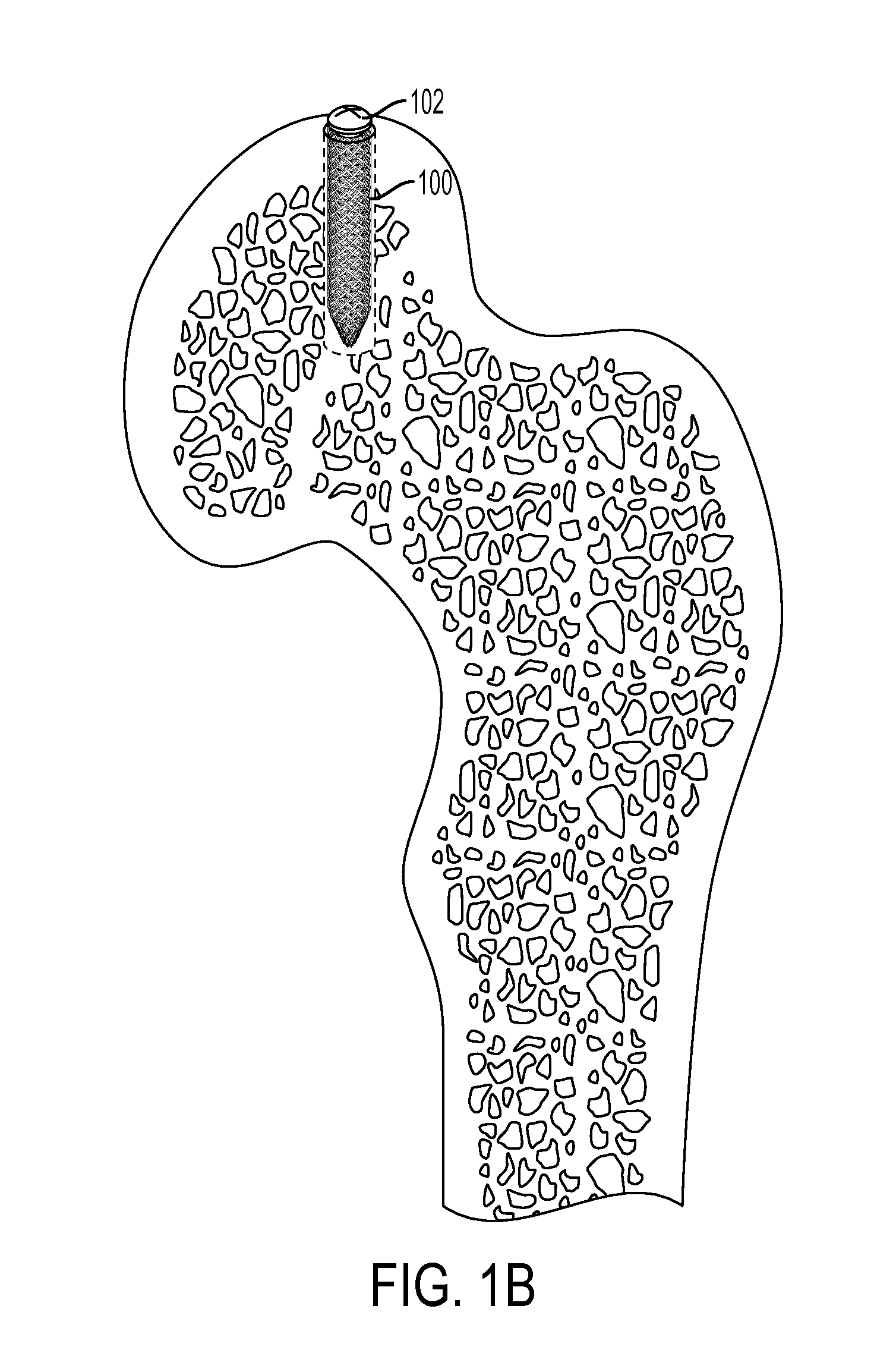Woven retention devices, systems and methods
a technology of retention device and woven fabric, applied in the field of woven retention device and system and method, can solve the problems of loss of purchase and holding strength of bone screw, loss of fixation or grip between bone screw and patient's bone, stripping of hole, etc., and achieve the effect of more pulling for
- Summary
- Abstract
- Description
- Claims
- Application Information
AI Technical Summary
Benefits of technology
Problems solved by technology
Method used
Image
Examples
Embodiment Construction
[0059]The devices, systems and methods described herein may be used in the area of orthopedics and, in particular, orthopedic repairs. These include various devices, systems and methods directed to fixing and / or retaining fasteners in orthopedic applications. Fixing or retaining fasteners to bone tissue is complicated by the underlining bone tissue. Understanding that an underlying cause of failure with internal fixation in bone tissue is the bone, the devices, systems and methods described herein provide for solutions that address the implant site. At the implant site, the hole and the bone benefit from an enhanced interface.
[0060]The fixation and / or retention devices, systems and methods described herein maximize fixation and / or retention in the bone tissue, including, osteoporotic bone, bone of a poor quality, and mechanically poor bone in addition to healthy bone tissue. The fixation and / or retention devices, systems and methods described herein may be used with any type of fixa...
PUM
 Login to View More
Login to View More Abstract
Description
Claims
Application Information
 Login to View More
Login to View More - R&D
- Intellectual Property
- Life Sciences
- Materials
- Tech Scout
- Unparalleled Data Quality
- Higher Quality Content
- 60% Fewer Hallucinations
Browse by: Latest US Patents, China's latest patents, Technical Efficacy Thesaurus, Application Domain, Technology Topic, Popular Technical Reports.
© 2025 PatSnap. All rights reserved.Legal|Privacy policy|Modern Slavery Act Transparency Statement|Sitemap|About US| Contact US: help@patsnap.com



